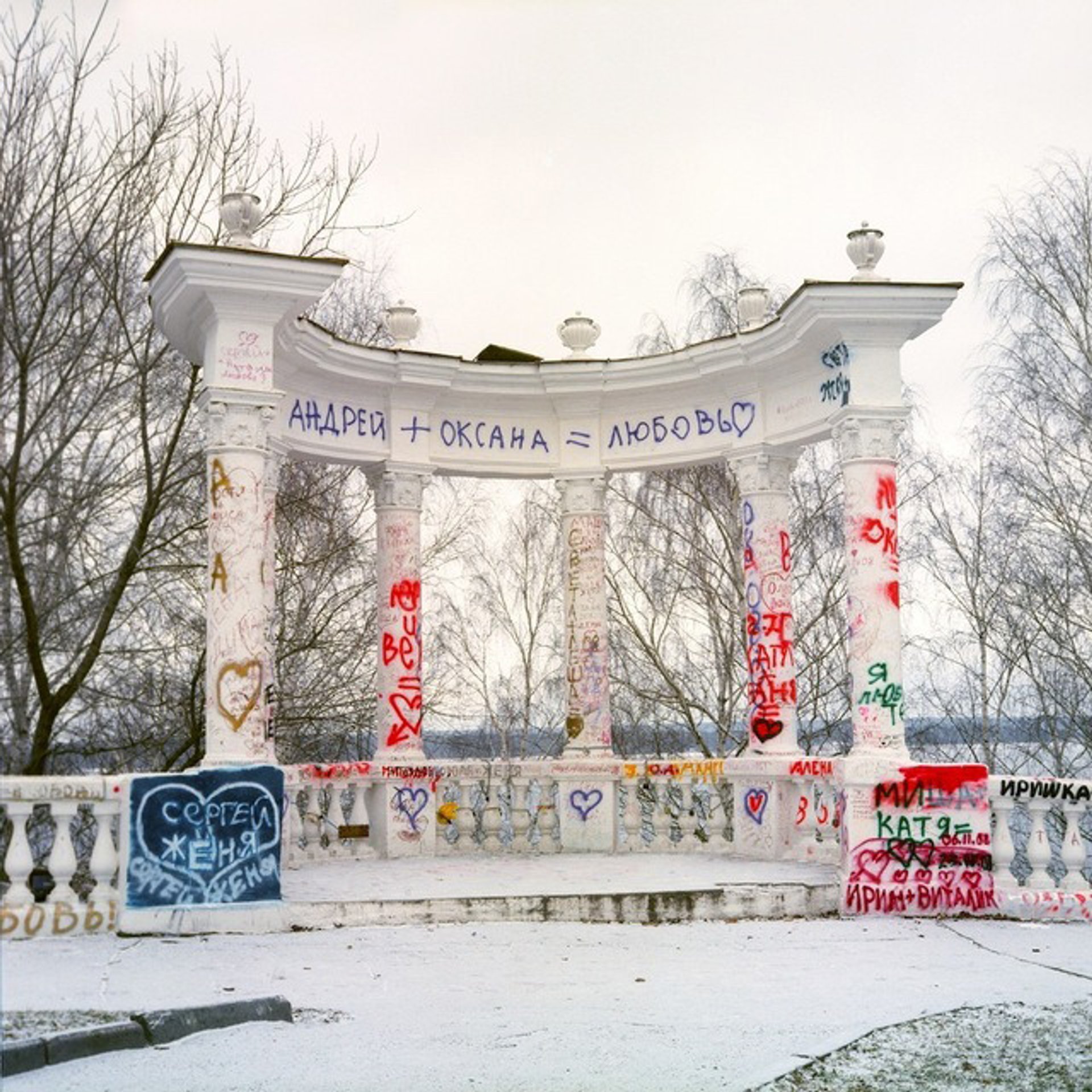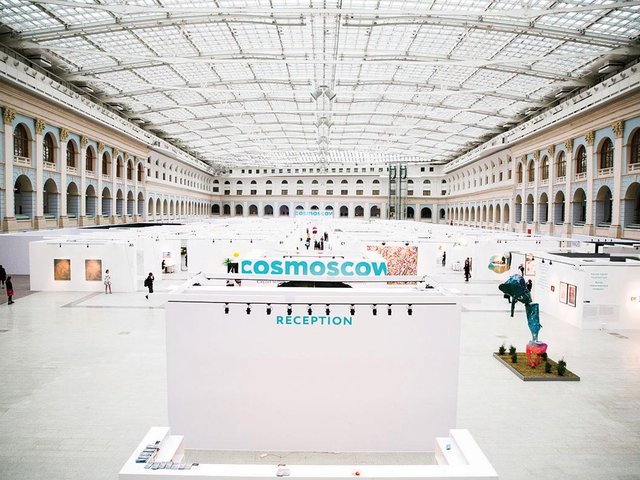“In Russia, we don’t do things because of circumstances, we do things in spite of them,” says Ksenia Podoynitsyna, who founded Moscow’s Gallery 21 in 2010. She was referring to the supreme efforts of Margarita Pushkina and Sandra Nedvetskaia, the founder and directors of Moscow’s contemporary art fair, Cosmoscow, whose third edition runs until 13 September.
The fair, which opened to Moscow’s it-crowd on 10 September, certainly operates against the odds in an unenviable context. Politically and economically, Russia is in a fragile situation, facing Western sanctions following its annexing of the Black Sea peninsula from Ukraine in 2014 and the effects of a dramatic fall in the price of oil.
Highlights of Cosmoscow

Sales made—though capped at €20,000 This year’s fair has 34 exhibitors mostly from Russia and former Soviet countries. Sales were being made at the fair, which with its vast space and two-artist booths, was easy on the eye—and included many works that merited international exposure.
Marina Gisich Gallery (St Petersburg) reported sales of works by the Russian artist Kerim Ragimov (around €20,000 each) to both local and overseas-based collectors. The dealers at Rosenfeld Porcini, who had travelled from London to seek out collectors in Russia, were pleased to have sold a work by the Greek artist Antonis Donef—Untitled (2015), £11,000—to a new buyer. At Triumph Gallery, two paintings by the German artist Kristof Meyer—Untitled, (2012, €7,000) and Harbour 4 (2007, €3,000)—were sold early on.
Perhaps the more significant challenge for the fair’s organisers is that “the commercial market for contemporary art is non-existent,” says Dmitry Khankin, the founder of Moscow’s Triumph Gallery. “There is no [contemporary] art business in Russia,” says Marina Vinogradova, the art director of Anna Nova gallery. Plus, she adds, “young artists can be very political, and that’s not really something that people want in their collections.”
A telling curated section of the fair, called “If I could…”, reimagines the living rooms of fictional Russian collectors in the 1960s and 70s had there not been the censorship and economic restraints of the Iron Curtain, which operated until the end of the Cold War in 1991. Until this time, there was no culture of contemporary art says Anastasia Mityushina, the curator of public programmes for the recently opened Garage Museum of Contemporary Art in Moscow’s Gorky Park.
Nedvetskaia is more hopeful and says that “appetite is growing, and seeping through to [Russia’s] middle classes”. But there is certainly still work to be done to persuade buyers, better-versed in older art, that contemporary works, particularly from their home turf, are worth the price (works at the fair range from €1,000 to €600,000). “I love contemporary art and I want contemporary art to exist,” says Khankin. For now, this sentiment seems to be keeping Russia’s scene alive.
The Art Newspaper Russia is a media partner to Cosmoscow


